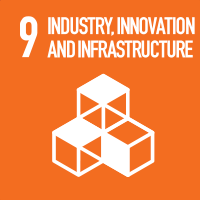Studying at the University of Verona
Here you can find information on the organisational aspects of the Programme, lecture timetables, learning activities and useful contact details for your time at the University, from enrolment to graduation.
Study Plan
This information is intended exclusively for students already enrolled in this course.If you are a new student interested in enrolling, you can find information about the course of study on the course page:
Laurea magistrale in Ingegneria e scienze informatiche - Enrollment from 2025/2026The Study Plan includes all modules, teaching and learning activities that each student will need to undertake during their time at the University.
Please select your Study Plan based on your enrollment year.
1° Year
| Modules | Credits | TAF | SSD |
|---|
4 modules among the following2° Year It will be activated in the A.Y. 2025/2026
| Modules | Credits | TAF | SSD |
|---|
| Modules | Credits | TAF | SSD |
|---|
4 modules among the following| Modules | Credits | TAF | SSD |
|---|
| Modules | Credits | TAF | SSD |
|---|
3 modules among the following2 modules among the followingLegend | Type of training activity (TTA)
TAF (Type of Educational Activity) All courses and activities are classified into different types of educational activities, indicated by a letter.
IoT Architectures (2024/2025)
Teaching code
4S010509
Credits
6
Language
Italian
Also offered in courses:
- Embedded AI - PART II of the course Master's degree in Artificial intelligence
- Networked embedded & IoT systems of the course Master's degree in Computer Engineering for Robotics and Smart Industry
- Networked embedded & IoT systems of the course Master's degree in Computer Engineering for Robotics and Smart Industry
- Networked embedded & IoT systems of the course Master's Degree in in Computer Engineering for Intelligent Systems
- Networked embedded & IoT systems of the course Master's Degree in in Computer Engineering for Intelligent Systems
Scientific Disciplinary Sector (SSD)
INF/01 - INFORMATICS
Courses Single
Authorized
The teaching is organized as follows:
Sistemi IoT
Sistemi embedded di rete
Learning objectives
The course focuses on complex IoT systems that present the interaction of embedded components with cloud components through a communication network. The course aims to describe the techniques for the automatic design of such systems, also present in the industrial field, starting from their specification to go through verification, automatic synthesis and testing. The main languages for dealing with this type of project and the most advanced automatic tools for their manipulation are also presented. At the end of the course the students will have to demonstrate that they have the following ability to apply the acquired knowledge: to identify, starting from the specifications, the best architecture for a complex IoT system; model, design and verify complex analog / digital components; develop embedded software and interact with IoT and cloud architectures; partition a functionality between HW and SW with attention to network architecture and operating systems; build a project report highlighting the critical aspects resolved; to be able to use additional languages for the design of IoT systems starting from those studied in the course.
Prerequisites and basic notions
Knowledge of the fundamental concepts of operating systems, communication networks, and TCP/IP architecture protocols. Programming in C or Python also through a command line interface. Ability to use the UNIX shell.
Program
Networked Embedded Systems
-----------------------------
- Wireless embedded systems and related transmission protocols
- Energy management
- Networked control systems
- Applications to home automation, industry, and agriculture
IoT systems
------------
- Network analysis tools
- The synchronization problem and Network Time Protocol (NTP)
- Containerization and orchestration: Docker and Kubernetes
- The pub/sub paradigm, MQTT and Kafka
- The concept of Compute Continuum
- Multimedia transmission over IP and the Quality of Service problem
Bibliography
Didactic methods
Frontal lectures and computer-based laboratory exercises.
Learning assessment procedures
The exam consists of:
1) oral test on the computer with questions on the theoretical and practical part;
2) an optional development of a project
- individual or team-based
- for those who have already passed the oral test, obtaining a score greater than or equal to 25
- effort: 40 hours of work
- to be closed by the end of September
- possible synergies, on request, with other courses, internships, theses
- max score: 3
Evaluation criteria
To pass the exam, students must demonstrate that they:
- have understood the basic principles of IoT architectures
- are able to present their arguments in a precise and organic way without digressions
- know how to apply the knowledge acquired to solve application problems presented in the form of computer programs.
Criteria for the composition of the final grade
Final grade: score of the oral exam + score of the project (if done)
Exam language
Italiano (English on demand)


